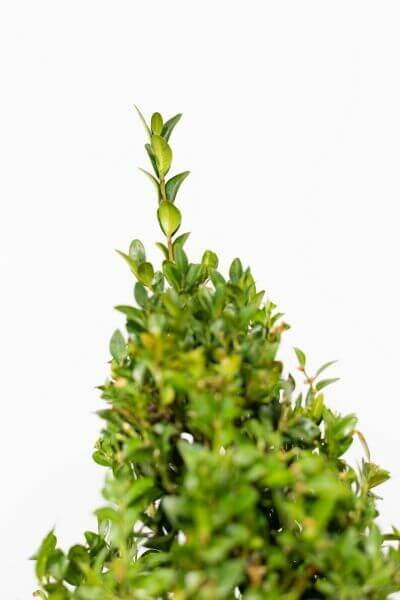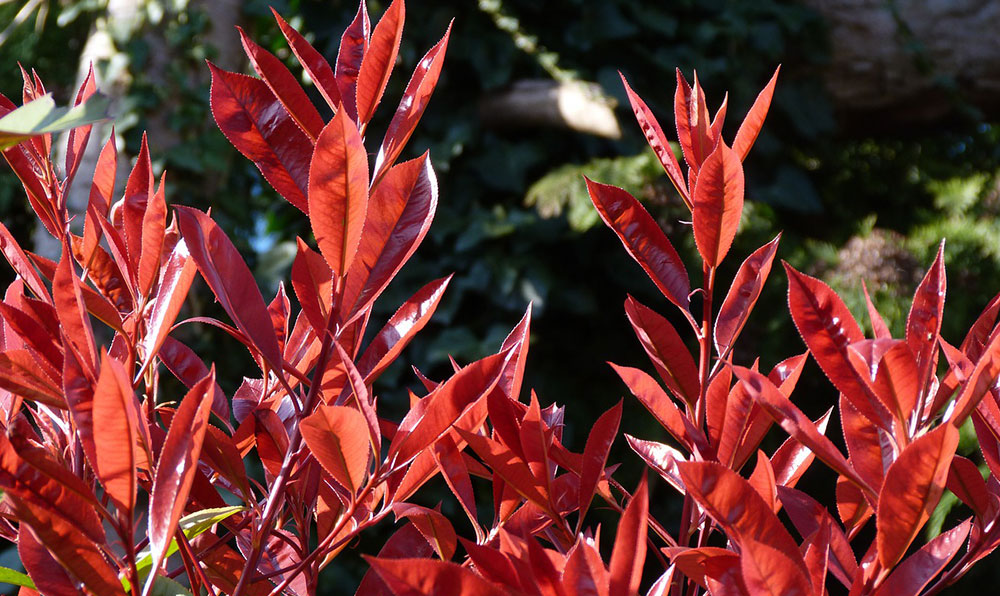Hedge Plants For Classic Borders
Hedge Plants For Classic Borders
Blog Article
Hedge Plants For Formal Landscaping
Enhance your garden's attraction with rich hedge varieties such as Yew (Taxus), Thuja, Laurel, Photinia, and Bamboo, commemorated for their structural stability and ecological benefits.
Yew and Thuja supply evergreen coverage and winter strength, while Laurel provides quick development and broad, fragrant leaves.
Photinia includes seasonal charm with its lively red foliage, and Bamboo provides a low-maintenance, serene ambiance.
These hedges enhance air quality, lower sound, and create tranquil, private areas.
Correct planting, spacing, and maintenance guarantee vigorous growth and eco-friendly harmony.
Explore how these rich ranges can raise your garden's appeal and wellness.
Key Takeaways
Transform Your Garden With Lush Hedge Ranges
- Select Yew for its thick, evergreen development and unrivaled durability.
- Go with Laurel for its quick growth and broad leaves, ensuring quick personal privacy.
- Pick Photinia for its lively seasonal foliage, which turns a striking dark red.
- Utilize Bamboo for a low-maintenance, winter-hardy hedge with aesthetic appeal.
- Space plants 2-3 per meter and prune routinely for ideal growth and health.
Popular Hedge Plants
When changing a garden with rich hedge varieties, it's vital to consider popular hedge plants such as Yew, Thuja, Laurel, and Photinia due to their unique attributes and benefits.
Yew (Taxus) is highly respected for its longevity and thick, green development, making it a prime choice for withstanding landscapes.
Thuja is noted for its evergreen foliage and robust winter resilience.
Photinia includes seasonal vibrancy with red leaves that darken with time, developing vibrant visual appeal.
Laurel provides fast growth and aromatic, broad leaves, suitable for quick privacy.
Additionally, Bamboo is an excellent option for atmosphere, using a low-maintenance, winter-hardy choice that improves the garden's aesthetic with its elegant, swaying walking canes.
These choices accommodate a variety of horticultural needs and preferences.
Advantages of Garden Hedges
Garden hedges provide a wide variety of benefits, making them a valuable addition to any landscape. These natural barriers are cost-efficient to execute and provide substantial wind security, enhancing air blood circulation and contributing to sound decrease. The thick foliage of hedges like Thuja and Beech ensures privacy by blocking visibility, developing a serene and remote environment.
Hedges also play an essential function in microclimate policy, supplying a steady environment that fosters plant development and minimizes temperature level fluctuations. Their complex leaf structures filter toxins, improving air quality and contributing to a healthier garden ecosystem.
Additionally, hedges master sound reduction, absorbing and deflecting acoustic waves to lower ambient sound levels. This dual performance of offering both visual and acoustic privacy boosts the general harmony and aesthetic appeal of any garden.
Planting and Upkeep Tips
For a successful hedge, careful preparation of the planting area is vital. Guarantee the soil has correct pH and drain to support strong root development.
Space the plants properly for the chosen species. Water the hedge often throughout its initial growth stage, adjusting as needed with seasonal modifications.
Implement a organized insect control and illness avoidance strategy, using natural or chemical treatments when essential. Regularly inspect for aphids, termites, and fungal infections.
Apply mulch to keep wetness and reduce weeds. Seasonal pruning promotes dense growth and air blood circulation, vital for plant health.
Following these guidelines will assist you cultivate a vibrant, properly maintained hedge that enhances the appeal of your garden.
Spacing and Trimming Standards
Spacing and Trimming Guidelines
Correct spacing and trimming are important for cultivating healthy, visually appealing hedges. Adequate spacing ensures each plant gets enough nutrients, light, and air flow.
Follow these guidelines for optimal hedge upkeep:
- Spacing: Position hedge plants 2-3 plants per meter to encourage robust growth.
- Pruning Methods: Regular pruning is necessary for preserving wanted hedge height and shape. Trim new development in summer and cut back older wood during winter.
- Seasonal Care: Change trimming approaches and schedules according to seasonal requirements to guarantee plant health.
- Hedge Height: Routinely monitor and cut to keep the desired hedge height and accomplish uniform aesthetic appeals.
Complying with these actions will guarantee your hedge prospers, boosting both the appeal and functionality of your garden.
Choosing the Right Hedge
Choosing the Right Hedge
Choosing the proper hedge includes evaluating aspects such as mature height, foliage density, and environmental durability. Successful hedge plant choice needs understanding each types' growth qualities and site-specific flexibility.
For example, Yew (Taxus) provides exceptional durability and dense growth, while Thuja is noteworthy for its winter season strength. Additionally, considering maintenance requirements is crucial; fast-growing species like Laurel or Privet need regular trimming, whereas low-maintenance alternatives like Bamboo or Ivy might be more suitable for those looking for very little maintenance.
Ecological aspects such as soil type, light availability, and wetness conditions need to also assist the choice procedure. This mindful technique makes sure the chosen hedges will thrive, offering both visual and practical advantages to the garden landscape.
Shipment and Planting Suggestions
To guarantee your hedge plants prosper, they ought to be delivered by specialized couriers and planted promptly upon arrival.
Follow these necessary steps for effective planting:
- Soil Preparation: Enrich the soil with organic matter to enhance drain and nutrient content.
- Planting Depth: Produce a trench twice the width and equivalent to the depth of the root ball.
- Watering Strategies: Water completely after planting, keeping the soil consistently moist however not saturated.
- Mulching: Apply a layer of mulch to retain moisture and reduce weeds.
Consumer Support and Service
Provided the essential function of prompt support in horticultural pursuits, our customer assistance team is available 6 days a week through telephone, email, and social media to provide expert advice and quickly resolve any concerns. Their devotion to fast action times makes sure consumer complete satisfaction by fixing questions connected to plant health, optimum planting approaches, and upkeep schedules.

Telephone
Within 48 hours
This detailed support group, enhanced by an outstanding 9.3/ 10 customer ranking, highlights our commitment to improving the gardening experience for each customer.
Regularly Asked Questions
For How Long Does It Take for Hedge Plants to Develop?
Hedge plants usually require one to 3 years to become totally established, with the specific duration differing by types and growing conditions.
Efficient care throughout this vital Additional reading period is important for robust development. Consistent watering, watchful weed control, and proper fertilizer application are pivotal in promoting strong root advancement.
For instance, fast-growing types like Laurel might establish faster, while slower-growing varieties such as Yew may take longer. Persistent upkeep accelerates the establishment process, leading to dense and healthy hedges.
What Are the Finest Hedge Plants for Personal Privacy?
The question of the very best hedge plants for privacy includes examining evergreen and deciduous options.
Evergreen hedges like Thuja, Laurel, and Cypress offer year-round protection, making sure constant privacy.
On the other hand, deciduous hedges such as Beech use seasonal privacy, shedding leaves in colder months.
Key maintenance ideas for personal privacy hedges consist of routine cutting, fertilizing in spring, and correct spacing-- typically 2 to 3 plants per meter.
Additionally, consistent watering and persistent weed elimination are vital for promoting healthy, thick development.
Can Hedge Plants Bring In Wildlife to My Garden?
Yes, hedge plants can draw in wildlife to your garden by offering vital advantages like shelter, food, and nesting sites, thus improving local biodiversity. Yew, holly, and laurel are exceptional for bring in birds, while ivy supports a variety of insects.
However, it is very important to keep in mind that there are some disadvantages, such as increased maintenance to handle bugs and regular upkeep. Thoroughly choosing and maintaining hedge ranges can help stabilize these advantages and disadvantages, ultimately cultivating a sustainable and vibrant environment in your garden.
Are There Any Blooming Hedge Plants Available?
Yes, there are flowering hedge plants offered that can enhance the appeal of your garden.
For example, Elaeagnus, likewise called Olive Willow, produces fragrant white flowers in the fall, including a touch of elegance.
Photinia, another popular option, showcases vibrant red leaves that grow into a rich green, developing a dynamic visual result throughout the seasons.
To ensure these plants grow, it's necessary to practice proper pruning methods and seasonal upkeep, such as trimming brand-new development in the summer season and cutting back in the winter season.
These procedures will help preserve the health and visual appeal of your flowering hedges.
How Do I Prevent Pests in My Hedge Plants?
To prevent pests in hedge plants, utilize natural bug control methods and maintain correct hedge care. Introduce useful pests like ladybugs, which victimize damaging bugs, to develop a well balanced community.
Routinely inspect your hedges for indications of invasion and without delay get rid of any afflicted parts to avoid the spread. Ensure the health of your hedges by applying balanced fertilizers and providing adequate water.
Make use of mulching to maintain soil wetness and appropriate spacing to minimize plant stress and promote robust growth. These practices jointly assist in minimizing pest issues and maintaining a healthy hedge.
Conclusion
In essence, picking the right hedge varieties such as Yew, Thuja, and Laurel can transform any garden into a tranquil sanctuary. These plants supply year-round plant, improve aesthetic appeal, and deal practical benefits like sound reduction and wind protection.
Correct planting methods, accurate spacing, constant watering, and seasonal trimming are important for optimum development.
Trusted shipment services and professional customer assistance make sure a smooth experience from purchase to planting, making it simpler than ever to raise your outdoor area.
Garden hedges offer a multitude of advantages, making them a valuable addition to any landscape. These natural barriers are economical to implement and supply significant wind defense, enhancing air blood circulation and contributing to noise decrease. The dense foliage of hedges like Thuja and Beech ensures personal privacy by obstructing presence, creating a secluded and tranquil environment.

Pruning Methods: Regular pruning is essential for keeping preferred hedge height and shape. Trim brand-new growth in summer and cut back older wood throughout winter.
Report this page